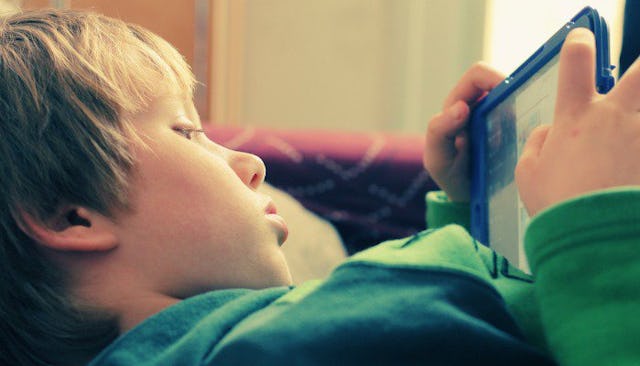Screen Time Isn't All Bad

“Here, watch this,” I say to my son as I plop him down with a bag of Goldfish crackers and Paw Patrol on the iPad. “Mommy needs to make dinner.”
Screen time has become a hot topic among parents, but like so many other things, not all screen time is created equal. I’m not ashamed to say that screen time is part of our daily lives, and I have no concerns that my children will become antisocial zombies because of it.
All children are different and so are their screen preferences. It’s up to us as parents to make the call on what’s appropriate and for how long. Common sense is a big player in this game. If an episode of Paw Patrol affords me the time to make a healthy meal for my family, I’m all for it.
For my kids, who are 2 and 5 years old, the American Academy of Pediatrics recommends a limit of one hour or less per day. That time increases to two hours or less per day for children 6 and older. This does not include educational uses like reading or research.
I do my best to stick to the recommendations, but that’s not always possible, and honestly, I don’t get too worked up about an extra episode of Doc McStuffins.
Even when used as entertainment, screens can still be beneficial. For example, I use screen time to help teach my children emotional intelligence. If you’re not familiar, emotional intelligence is the ability to not only identify and manage your own emotions but to also be empathetic and judicious with the emotions of others. You can see how something like that might come in handy on the playground, or any other area of life, for that matter.
Every Saturday, we have family movie night, complete with chocolate milk and popcorn. We snuggle into bed and veg out like college kids. Because my kids are still young, Disney movies are their jam. One night while watching Tangled, my daughter said, “Mommy, why is she so sad?”
This simple question started a conversation with the whole family. We talked about our emotions, and the impact our actions can have on others. You don’t realize the complexity of someone’s emotions until you attempt to explain them to a 5-year-old. (Disney characters are way deeper than you think.)
Maybe it’s because Rapunzel is a princess or maybe it’s because 5-year-olds love new information, but our conversation spilled over into the next day, and then the next movie night. Before long, it became our routine to do a book club-style review when movie night ended. We recap what happened and why certain characters made the choices they did — many of those choices being emotionally driven.
Could I teach these same lessons while reading books to my children? Of course, and I often do, but the point is, my kids are going to watch movies regardless, so why not take the opportunity to engage with them?
Our world is brimming with technology and screens will likely continue to be part of that. Finding a way to incorporate them into our lives without letting them take over is something many of us struggle with. It’s our job as parents to teach responsible screen use, even when it feels like a daunting task.
If your kid is an angsty teenager who loves Xbox, you can still use it as a way to engage with them. Ask about their favorite game, the characters, or the storyline. Let it be the springboard that carries you into a conversation. You may be surprised what you learn or what you are able to teach them.
Bottom line: Screen time isn’t all bad. Be aware of what your children are watching and moderate it as you see fit. Engage with them when you can. Even if there isn’t a lesson to be learned, there is always a benefit when you are having conversations and sharing in their interests.
This article was originally published on